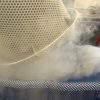Every rubber molder knows that as mold tooling wears, mold flash can become an issue. As more parts are produced these wear issues become more apparent. The next thing you know…
Read More
A few weeks before Christmas, we completed a job for a Worcester-based company using our cryogenic material recovery service. Our customer manufactures and sells safety devices with a very special…
Read More
Since 2002, the Cryogenic Institute of New England, Inc. has provided cryogenic deflashing and cryogenic deburring services. We provide deflashing and deburring solutions for manufacturers of plastic, rubber and…
Read More
Over the past few years, we have completed many dry ice blasting renovation projects for home owners, commercial clients, and even construction firms. In July of 2007, we completed a…
Read More
At the Cryogenic Institute of New England, Inc. we offer cryogenic treatment for brake rotors and pads. In recent times, many customers have been asking if we can supply the…
Read More
One of our service offerings, cryogenic deflashing has seen a major spike in orders lately. Many customers with silicone and rubber parts are utilizing cryogenic deflashing to clean any excess…
Read More





